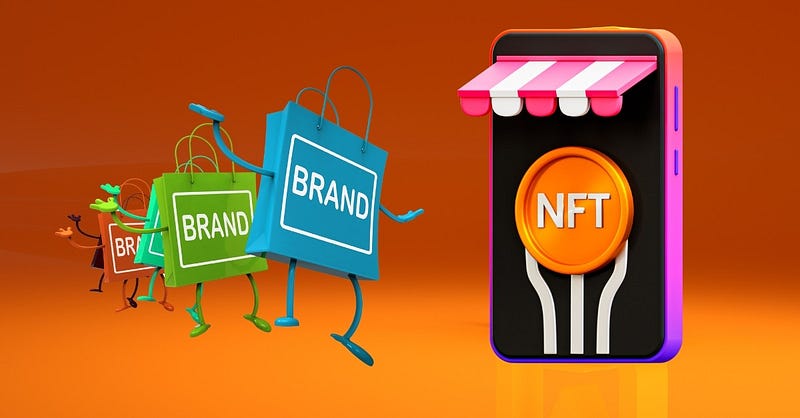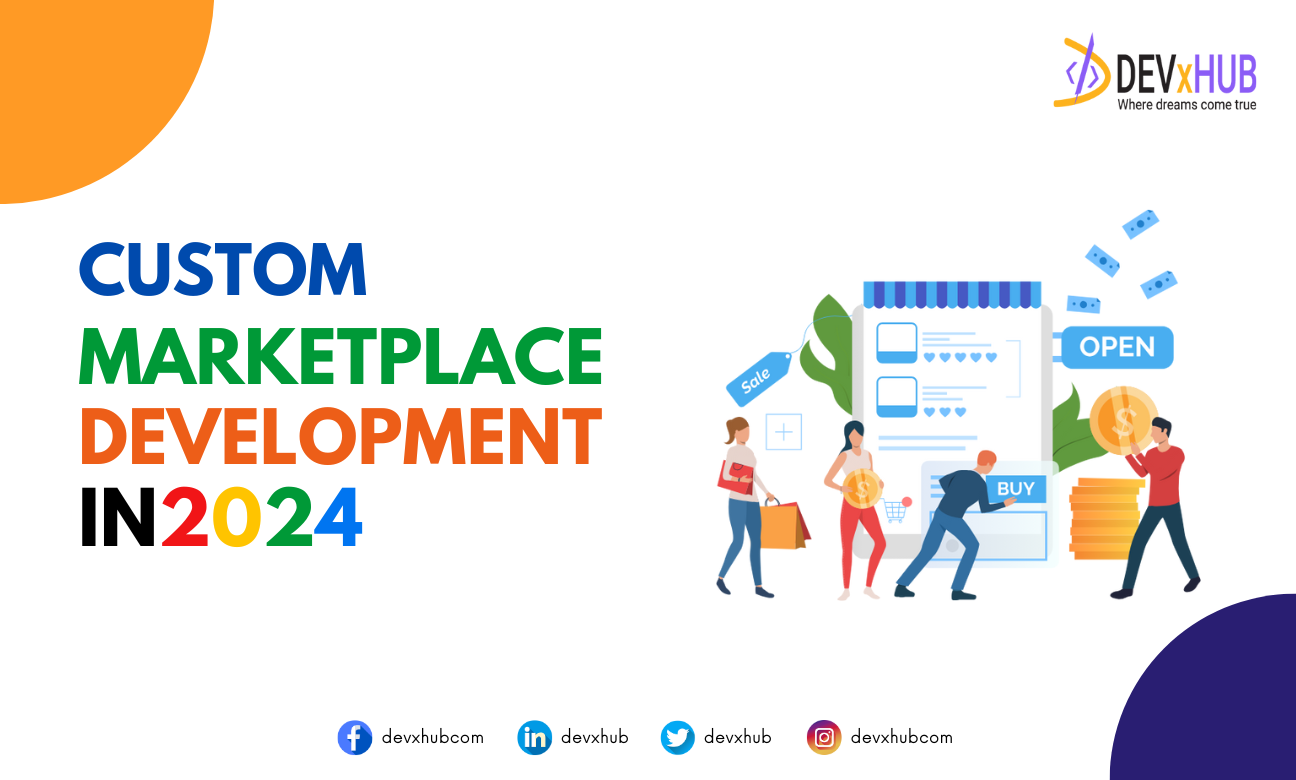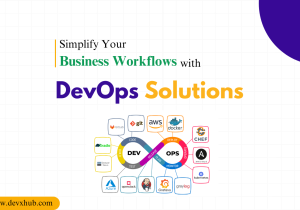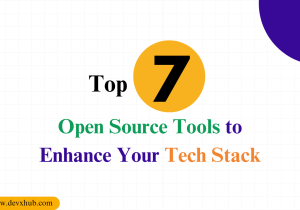Blog - Custom Marketplace Development in 2024
In the constantly shifting terrain of digital commerce, Marketplaces have solidified their role as pivotal hubs for online trade, providing a platform for individuals and companies to engage, purchase, and vend products and services with ease. As per Forrester, marketplace platforms account for 60% of global e-commerce sales. But what is there to know about Custom Marketplaces Development in 2024 to keep pace?
This blog ventures into the intriguing realm of marketplace development, scrutinizing its assorted types, dominant business models, the rising trend of private marketplaces, and the breakthrough role of non-fungible tokens (NFTs) in revolutionizing the marketplace scene.
Emerging Technologies Shaping the Future of Marketplaces
Blockchain Beyond NFTs
While NFTs have spotlighted blockchain’s potential in ensuring authenticity and ownership, this technology’s application in marketplaces extends far beyond. Smart contracts automate transactions and enforce agreements, offering transparent, efficient, and secure operations. Blockchain also enhances supply chain transparency and fraud prevention, critical for B2B marketplaces dealing with complex logistics and procurement processes.
Augmented Reality (AR) and Virtual Reality (VR)

AR and VR technologies are transforming the online shopping experience, allowing customers to visualize products in their environment or immerse themselves in virtual stores. These technologies can significantly reduce purchase hesitancy and returns, especially in fashion and home decor marketplaces. By 2024, the integration of AR and VR in custom marketplaces has become a differentiator in providing immersive customer experiences.
Evolving Consumer Preferences and Their Impact
Demand for Personalization
Consumers increasingly expect marketplaces to offer personalized experiences, from product recommendations to customized search results. AI and machine learning algorithms analyze user data to tailor the shopping experience, enhancing customer satisfaction and loyalty. Marketplaces that excel in personalization can differentiate themselves in a crowded digital landscape.
Rise of Social Commerce
The blending of social media and e-commerce has given rise to social commerce, where purchases are made directly through social media platforms. This trend emphasizes the importance of integrating social features into marketplace platforms, such as live streaming, social sharing, and influencer partnerships, to drive engagement and conversions.
Sustainability and Ethical Consumerism
The growing consumer emphasis on sustainability and ethical practices influences marketplace operations and vendor selection. Marketplaces that prioritize eco-friendly products, ethical sourcing, and transparency in production processes are gaining traction. Implementing sustainability initiatives and certifications can attract a more conscious consumer base and foster long-term loyalty.
Security and Privacy in the Age of Data
As marketplaces collect vast amounts of user data, ensuring security and privacy becomes paramount. Adhering to global data protection regulations, employing robust cybersecurity measures, and transparently communicating privacy policies are essential to maintain trust. Furthermore, the rise of decentralized identities offers a new approach to user authentication and data privacy, reducing the risk of data breaches and identity theft.
Custom Marketplace Development: A Strategic Advantage

Custom marketplace development allows businesses to tailor their platforms to specific target markets, regulatory environments, and business models. This bespoke approach enables the creation of unique value propositions, setting a marketplace apart from competitors. In 2024, the ability to rapidly adapt to market changes, integrate emerging technologies, and respond to consumer demands is a critical competitive advantage.
How does Marketplace as a Service (MaaS) operate?
The concept of Marketplace as a Service (MaaS) has gained substantial traction in recent times. MaaS platforms furnish businesses with the necessary infrastructure and tools to establish and administer online marketplaces. These platforms offer an array of functionalities, encompassing product listings, secure payment gateways, user authentication, and dispute resolution mechanisms. By leveraging MaaS, companies can concentrate on fortifying their brand and expanding their customer base without the intricacies of developing a marketplace from the ground up.
Marketplace Evolution: Concise Overview & Key Players

The inception of app stores, exemplified by Apple’s App Store and Google Play, alongside e-commerce trailblazers like eBay, laid the foundation for contemporary marketplaces. These centralized platforms empowered developers to disseminate their applications to an extensive user demographic, instigating a paradigm shift in the software industry. The triumph of app stores set the stage for the emergence of diverse marketplace variants, including e-commerce hubs such as Amazon and eBay.
In 2024, the term “marketplace” no longer solely denotes titans like Amazon, eBay, or AliExpress. “We’ve witnessed a remarkable surge in the popularity of apps, services, and marketplaces that connect various stakeholders in specialized markets. Companies like Etsy, Clutch, Shutterstock, LinkedIn, Expedia, Uber, and Apple Music have adeptly capitalized on this phenomenon by launching platforms that facilitate interactions between local vendors and potential customers,” remarked Oleksandr Trofimov, Chief Technology Officer at Artelogic.
These platforms cater to distinct sectors, spanning B2C (business-to-consumer), B2B (business-to-business), and C2C (consumer-to-consumer) engagements.
Significantly, in 2023, consumers expended $3.25 trillion on the top 100 online marketplaces, underscoring the pivotal role of these platforms in global retail e-commerce sales, which totaled $5.7 trillion.
Types of Marketplaces
Marketplaces are diverse, catering to various niches and audiences. Common types of marketplaces in 2024 include:
- NFT Marketplaces: These platforms, like OpenSea and Rarible, facilitate the buying and selling of unique digital assets, such as artwork and collectibles, using blockchain technology for provenance and authenticity.
- App Marketplaces: Examples include Apple’s App Store and Google Play, which connect app developers with millions of users, enabling distribution and monetization of applications.
- Service Marketplaces: Platforms like Upwork and Fiverr connect freelancers with clients seeking specific services, such as graphic design and programming.
- B2C and B2B Marketplaces: Amazon and Alibaba are examples of B2C marketplaces, offering consumers a wide range of products. B2B marketplaces like Thomasnet and Alibaba Business focus on facilitating business transactions.
- C2C Marketplaces: Websites like Shutterstock and Etsy provide a platform for individuals to buy and sell goods directly to other consumers, promoting a peer-to-peer economy.
Popular Marketplace Business Models in 2024 (+ Their Risks)
Marketplaces employ various business models to generate revenue, each with its inherent risks.
- Commission-Based Model: Platforms charge a fee for each transaction, which can be a fixed percentage, a flat rate, or a variable commission. For instance, Aliexpress operates using this model.
- Risk: Balancing fees to ensure profitability without deterring users is crucial. Analyzing competitors’ fees and devising a competitive pricing strategy is essential.
- Subscription-Based Model: These platforms charge regular fees to sellers, buyers, or both for accessing marketplace services. Examples include Shutterstock’s membership options.
- Risk: The risk of losing customer loyalty exists. Offering different subscription tiers with discounts or fee-sharing options can help mitigate this risk.
- Listing Fee: Vendors pay a fee for each listing they create on the platform. Craigslist is an example of this model.
- Risk: Establishing trust to justify charging for listings is essential. Combining this model with others can enhance effectiveness.
- Lead-Fee Model: Vendors pay for leads obtained through the platform. HomeAdvisor uses this model.
- Risk: Marketplace leakage can occur if transactions move outside the platform. Setting reasonable prices is crucial to prevent this risk.
Custom Marketplace Development: Why Do Businesses Invest in Private Marketplaces?
Private or niche marketplaces cater to specific industry needs, allowing businesses to expand services and showcase offerings from other suppliers, such as apps and plugins.
“This controlled environment offers enhanced control over ad placement, often providing premium positioning opportunities,” says Oleksandr Trofimov, Chief Technology Officer at Artelogic.
In 2024, private marketplaces have gained popularity among businesses for several reasons:
- Enhanced Control: Custom Marketplace Development allows businesses to maintain control over user experience, branding, and data privacy, integrating seamlessly with existing operations.
- Customization: Private marketplaces can be tailored to specific business needs, offering unique features and workflows aligned with industry and audience.
- Monetization Opportunities: Businesses can generate revenue streams by charging suppliers for access, offering premium services, or facilitating value-added transactions.
- Data Ownership: Private marketplaces enable businesses to retain ownership of valuable data generated by user interactions, facilitating data-driven decision-making.
This evolution highlights the adaptability and versatility of marketplaces in meeting the evolving needs of businesses and consumers alike.
The Trend in Custom Marketplace Development: NFTs and Their Functionality
A non-fungible token (NFT) stands as a unique digital asset with individual ownership and control, ensuring its distinctiveness. Unlike cryptocurrencies, NFTs cannot be duplicated, ensuring the existence of a single instance for each token.
By 2024, the NFT market size has surged, reaching a valuation of over $41 billion, with OpenSea, the leading NFT marketplace, experiencing an 800% increase in trading volume compared to the previous year.
“NFTs, representing digital assets like art and music, are generated using blockchain technology. They are then exchanged between parties through an encrypted smart contract system utilizing ‘NFTs’ or ‘non-fungible tokens.’ These tokens symbolize unique assets, similar to shares or securities, offering value beyond mere digital replicas of physical items like coins or bills,” elucidated Ihor Prudyvus, Engineering Director at Artelogic.
NFT Industry Trends in 2024

Artificial Intelligence
The integration of artificial intelligence into NFTs introduces a new level of uniqueness, enabling tokens to generate dynamic images based on algorithms. AI-powered techniques could significantly alter the market, producing unparalleled works of art. Additionally, algorithmic generative digital collectibles may adapt and evolve in response to future data changes or events.
NFTs in Gaming
The convergence of gaming and NFTs continues to be a notable trend in 2024. Players can buy, own, and develop virtual properties represented by NFTs within gaming environments, particularly in the context of the metaverse. This integration shapes digital collectibles, enhancing their value within gaming ecosystems.
NFTs in Healthcare
Digital collectibles offer secure storage for patient records, incentivize patient participation in research data collection, and provide healthcare professionals with quick and reliable access to medical data. NFTs can represent virtual healthcare assets, such as medical equipment and telemedicine platforms, facilitating virtual training environments and healthcare services.
NFTs in Fashion
The fashion NFT market experiences exponential growth, with major industry players investing digitally through NFTs. Platforms like DIGITALAX revolutionize the fashion sector, enabling luxury brands like Gucci to establish virtual stores within the metaverse. Fashion NFTs are poised to become a significant trend in 2024, reshaping the industry’s landscape.
NFTs in Real Estate
NFTs gain traction in the real estate sector, facilitating secure transactions and eliminating paperwork risks. They represent virtual real estate within virtual worlds or metaverse environments, allowing users to purchase, own, and customize virtual properties. This technology streamlines real estate transactions and enhances property ownership experiences.
In summary,
custom marketplace development trends play a vital role in global business success, offering transformative engagement methods, operational efficiencies, and revenue diversification.
Custom marketplace development empowers businesses to meet their unique needs and those of their customers, providing flexibility and scalability for long-term growth.
In an increasingly digital world, staying informed about custom marketplace development trends provides a competitive advantage, fostering innovation, customer loyalty, and profitability in the evolving global marketplace landscape.
Related Posts
Categories
- App Development (2)
- Design (2)
- DEVxHUB (30)
- Digital Marketing (2)
- Guide (24)
- It Bangladesh (1)
- Logo design (1)
- Operating system (1)
- Personal Improvement (14)
- Planning (4)
- Project management (3)
- Social media (2)
- Software Development (5)
- Software Quality Assurance (8)
- Startups (1)
- Team work (1)
- UI UX (1)
- Web Development (6)
Main Tags
- 2024
- Android
- app development
- bangladesh
- content writing
- design
- devxhub
- Digital marketing
- Guide
- IOS
- It
- logo design
- Operating system
- Personal Improvement
- planning
- project management
- social media
- Software Development
- Software Quality Assurance
- software testing
- software testing types
- Startups
- Success
- team
- UI UX
- UI UX design
- VR
- Web Development















